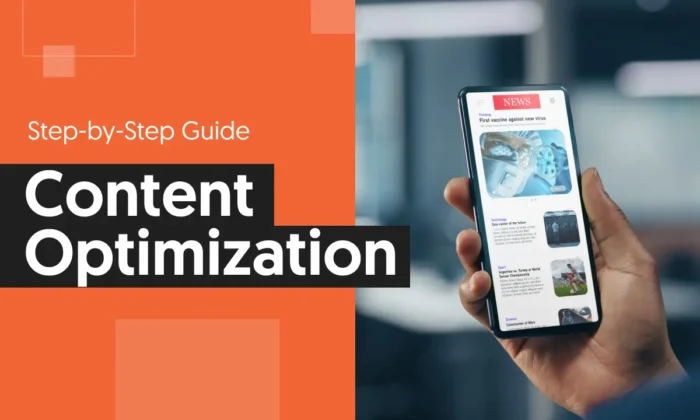12 strategies to scale your SEO team without losing your culture

In 2015, I joined what was a very small SEO team. Since then, we have more than tripled our size.
As we grew, we faced the challenge of scaling our team and continuing to deliver strong work, all while maintaining the culture that enabled our growth in the first place.
This article underscores the significance of creating a strong culture and shares our tactical steps as we grew our team.
Our goal for this journey wasn’t just team expansion but to nurture a culture of excellence and innovation.
Every new member needed to amplify our collective strength rather than dilute it.
Here, I’ll take you behind the scenes of our growth story to:
- Share the importance of cultivating a robust team culture.
- Highlight the steps we took to scale successfully while preserving the essence of who we are.
Challenges with scaling
Ultimately, the challenges of scaling an SEO team boil down to changes in the quality of your “three Ps”: people, process and product.
- People: Rapid growth can lead to a hiring frenzy, and new hires meant to ease the load end up adding to it. Managers find themselves juggling more responsibilities, including training those newcomers.
- Process: Without well-defined standards of practice (SOPs) and training programs, service delivery can become a game of chance, negatively impacting consistency as the team expands.
- Product: Growth often means less flexibility in your product offering. Clear swim lanes for your team need to be established and product offerings standardized, rather than offering too many solutions where you customize every task.
To overcome these challenges, you must:
- Intentionally maintain your team’s culture.
- Foster communication across locations.
- Develop a consistent SEO approach.
- Create a positive work environment that attracts and retains top talent.
With the right approach, you can successfully scale while maintaining your team culture and delivering great client results.
Why culture matters in an SEO team
SEOs are effectively consultants, often working with other marketers. In any consulting business, the biggest asset is the people.
Engaged employees are happier and lead to a 202% revenue increase compared to organizations with a less engaged workforce per one study.
A strong culture in the SEO space is essential for a consulting team as it fosters collaboration, attracts and retains top talent, and helps build a strong brand – all of which help your team stand out in the market. Up to 35% of workers would pass on a job if they felt the culture was not a good fit.
12 ways to maintain your culture as you scale
1. Define your SEO team’s core values
The best corporate cultures are usually rooted in a shared set of beliefs, values, working methods and (perhaps most importantly) purpose.
To define your core values, start by defining a mission statement. Is there anything people consistently say about you that makes you great?
Discussing shared values and goals with your team in a brainstorming session can be a good place to start, but you may want a smaller group to define the final set of core values.
Stephanie Gioia offers a useful framework to determine which values may be truly useful versus which do not serve the overall strategy.
Dig deeper: How to build a values-based agency that drives results
2. Create a strong leadership team and structure
Leaders typically define the culture of a team. This is why it’s especially important to think about the cultural contributions that are most important when identifying team leaders, as well as how to structure your team beneath those leaders.
Limit direct reports to maximize time spent with managers
Nothing says that it’s time to look for a new job like a manager who isn’t providing proper leadership.
Building a culture means retaining the key players through supporting their needs. To do so, you need to ensure that your team has what they need, and one of the most important things needed is proper guidance, especially at the junior levels.
We also recognized early on that for managers to be effective, they need time to provide deep learning, tactical support, and strategic guidance.
We made the business case to hire ahead of the present need state and bring in additional managers to stabilize the management structure. We divided the team into two distinct teams, each with an associate director.
We found that three to four direct reports per manager were the maximum we could allocate without losing our culture and bandwidth to manage and lead.
Frequent manager check-ins
Regular check-ins with team members so that they feel valued and heard is critical to creating an empowered team and retaining personnel.
For our team, this means that each manager meets with their direct reports at least once weekly to dive into the work.
Some managers meet with their direct reports twice or thrice weekly to review deliverables or prepare for client presentations.
Creating a feedback loop
It isn’t enough to just encourage feedback. High-performance teams tend to create a feedback loop wherein feedback is not just heard but clearly actioned upon, thus encouraging more feedback.
The faster and more publicly you act on feedback, the more feedback people will provide. The more feedback that people provide, the better the team gets.
We frequently ask the team for feedback on onboarding, client kickoffs, projects we executed, and team events. We also encourage our team to provide feedback to their managers on how they can better work together.
3. Delegate ownership of team culture
Another critical aspect of scale is delegating key tasks and objectives across the team, including culture.
While it often comes from the top, sometimes team members are stronger connectors and culture builders – and that is OK!
Acquiescing control is tough for most leaders, but the sooner you elect an “owner of team culture,” the sooner you’ll see that garden grow and flourish.
From a tactical perspective, we picked an employee who came to our team with a strong desire to lead culture and had fantastic ideas about implementing it well.
This person also has a great attitude, is highly thoughtful and pleasant, and even wins awards for their cheerful demeanor.
Let team members own areas of the business if they are better suited.
4. Hire for culture contribution vs. culture ‘fit’
One of the biggest paradigm shifts I had as a manager and leader was realizing that I didn’t need or want a “culture fit.” Instead, I needed to recruit based on what cultural contributions candidates could make.
SHRM.org has collected great resources on the idea of “culture ad,” which I recommend reading to learn more about the topic.
There’s also the danger of hiring people whose own core values are not aligned with your team. Rand Fishkin discusses hiring for competence versus culture fit and makes the astute point that it is unlikely that you will be able to change someone’s views totally.
Fishkin recommends building questions in your interview process that can help you identify alignment or gaps.
Identify potential new hires by how well they match your existing culture and what they can add to it.
To put this process into action, map out what you feel your team needs from both a competency and a cultural perspective. Ensure you consider that in your recruiting and career path development approach.
5. Acknowledge greatness as much as you can
In hearing the stories of CEOs and founders, a common thread that I have noted among the best is that their organizations had a strong culture of acknowledging greatness.
Good deeds, both big and small, that are boldly acknowledged can have a powerful effect on an organization.
Jim Perdue of Perdue Farms shared in NPR’s, “Wisdom From The Top with Guy Raz” that highlighting his employees’ good work with a “good egg” award was a key part of a critical change that they needed for Perdue to become a $7 billion business.
You can highlight your team’s work in digital communication channels such as Slack, Teams, or email, or even in person with a paper cut-out award like Jim Perdue.
Whichever method you take, call out your team’s great work frequently, publicly, and individually during one-on-ones.
Get the daily newsletter search marketers rely on.
6. Have SOPs that are carefully documented
One thing distinguishing an SEO practice is the SOPs that the team follows and their ability to cater deliverables to client businesses and situations.
Having an SOP library has helped our team maintain our culture of detail-oriented work and the quality of that work.
Our team has around 40 different SOP deliverables. These deliverables range from on-site, technical/structural, and off-site.
We generally have a template to follow for each category, an SOP document, and even videos.
This documentation helps our team feel like they know what to do while encouraging them to iterate and improve the SOP.
Having a living, breathing SOP that grows and develops as the industry changes is critical. Accordingly, ensure the team knows that “breaking the mold” is welcomed and encouraged.
Tools like tango.us or fireflies.ai can help you quickly document processes and meetings. A company intranet where all the SOPs live is also a great resource.
You can also simply use Google Drive or a project management tool like Asana to house all SOP documentation.
Dig deeper: 4 tips to build a data-centric culture in your agency
7. Create frequent learning and development opportunities
High-performance race cars require fine-tuning – so does your team. Having a culture built with learning and development cultivates top talent while adding value to employees.
Learning and development create a space people want to be in and an empowered, engaged community.
Here are the regular learning and development practices we have:
- Every Monday, a team member leads a 30- to 60-minute presentation covering something in the world of SEO or content.
- A Microsoft Teams channel dedicated to tools, tips, and things happening in the industry.
- One of our team members creates a weekly round-up that is shared with the team, covering the top digital marketing news.
- We sponsor conference attendance for employees, paying for airfare, hotels, and tickets to send our team to conferences like Mozcon, Pubcon, Search ****, C3, and State of Search, to name a few. We then compare notes from the conferences everyone attends to share learnings across the team.
8. Consider a democratic approach
Our most critical decisions are decided based on a vote from the full team or among the managers.
Running a democratic team requires patience and diplomacy but, in the long term, creates a true sense of community.
Sometimes, leaders may need to make decisions that not everyone is on board with.
That said, the more leaders can gain alignment and treat the team as the sum of its parts, the more stock people put into things, and the better everything works.
Making decisions democratically is like rocket fuel for a team dynamic.
9. Offer up well-planned communication channels
In a remote work environment, we have to navigate having open lines of communication – while still allowing people to focus on their work.
We analyzed how best to simulate our in-office synergy and landed on using channels in Teams.
We have channels dedicated to tools and tech, getting help from others, off-topic non-work things, and client-specific channels in Teams that help our team stay connected.
10. Celebrate together, often
Our focus on celebrating together as a remote team is about celebrating client successes, personal development milestones, years with the company, personal achievements and more.
One of my favorite things we do is celebrate workiversaries (work anniversaries).
Whenever a team member hits their company anniversary, we collect quotes from the other team members and send them along as words of praise, encouragement and general cheer.
With so much of our lives spent at work, we want to make it clear that we appreciate the time people spend with us.
11. Share in what makes people unique
Our Team Hub document is a place for us to collect information about our team members’ interests, hobbies, and favorite foods so that we can celebrate their individuality.
We use this information during holidays, celebrations, and generally, to create a supportive, festive environment that celebrates our individuality.
We also do something we call “Question of the Day,” where we ask a fun question each week and everyone provides their answer.
This could be something like “If you were a Disney character, which one would you be?” or, “if you had a YouTube channel, what would it be about?”
It is a fun way for us to connect and discuss our favorite things in a fairly structured way, enabling everyone to have the mic for a moment.
12. A strong recruiting approach leads to a strong team
How you approach recruiting can greatly impact the talent **** and how your team culture develops.
Some of the most important tools that helped maintain our culture were a part of our hiring process.
- The job description: Having a clear job description that describes the actual day-to-day work ***** candidates excited to do that work; this is an obvious grand slam.
- The interview process: Our interview process has multiple steps, including meeting the associate directors, HR, team members of other titles, and, lastly, our VP or CDO in some cases. This process enables a broader set of team members to reach a consensus-based decision on the hire.
- Questionnaire: We give all potential new hires the same questionnaire with technical SEO and other SEO questions. We ask some of these questions in person later in the process – giving interviewees time to think. We want to create a level playing field for candidates who may be better at problem-solving through writing vs. firing off answers in an interview. We also welcome research, as research is critical to what we do and who we are as SEOs.
- Work samples: We ask everyone for work samples to see the attention to detail, quality, care, and insights they offer.
Running all candidates through the same process helps us to accomplish several things.
First, make the right hires, adding value to our culture.
Next, the process helps us provide what we feel is a fair and equitable approach to evaluating talent and fostering an inclusive environment, which is the type of culture we want to build.
Ready to scale your team?
Shift your hiring mindset from culture “fits” to culture “contributors,” delegating the ownership of culture curation, acknowledging greatness and adopting methods to retain and enhance team culture.
Additionally, we recommend fostering a learning environment, limiting the number of direct reports to managers, and creating a democratic decision-making process.
Hopefully, some of our learnings will prove helpful to you in your journey. This road was not easy, but with the principles discussed here, we adapted, innovated and grew the way we wanted.
Opinions expressed in this article are those of the guest author and not necessarily Search Engine Land. Staff authors are listed here.
Source link : Searchengineland.com



